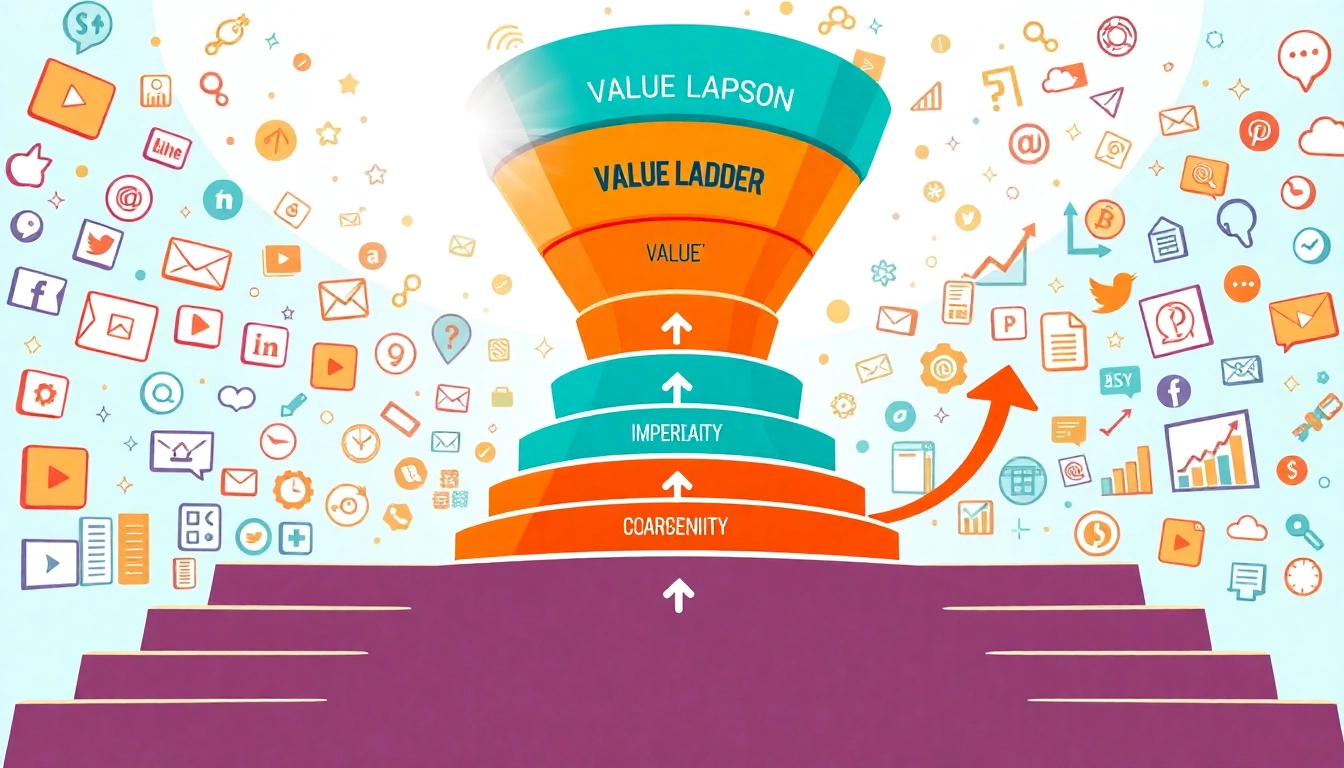Understanding Payroll Software
What is Payroll Software?
Payroll software is a digital solution designed to automate the payroll management process, simplifying tasks such as calculating wages, withholding taxes, and generating employment-related reports. As businesses grow and the intricacies of employee compensation rise, leveraging payroll software becomes essential for maintaining compliance and efficiency. It allows companies to manage their payroll processes from onboarding to termination, all while minimizing the risk of errors inherent in manual payroll calculations. This not only enhances productivity but also ensures that employees are compensated accurately and on time. A comprehensive payroll software solution integrates various functionalities that streamline payroll tasks, payment processing, and reporting. Payroll software has evolved significantly, with many modern solutions providing advanced features and catering to organizations of all sizes.
Key Features of Payroll Software
Modern payroll software is equipped with numerous features that cater to diverse business needs. Here are some key functionalities:
- Automated Calculations: This feature calculates wages, overtime, bonuses, and taxes automatically based on current regulations.
- Employee Self-Service Portal: Employees can access their payroll information, pay stubs, and tax documents, empowering them and reducing administrative overhead.
- Tax Compliance: Payroll software ensures adherence to federal, state, and local tax laws, automatically adjusting to any changes in regulations and delivering timely tax filings.
- Time Tracking Integration: Many payroll systems integrate with time and attendance software, allowing for accurate paycheck calculations based on hours worked.
- Direct Deposits: Employees can receive their wages directly in their bank accounts, enhancing convenience and efficiency.
- Reporting and Analytics: The ability to generate reports on payroll, employee costs, and compliance requirements helps businesses make informed decisions.
Benefits of Using Payroll Software
The adoption of payroll software brings numerous advantages:
- Time Efficiency: Automating payroll processes significantly reduces the time spent on calculations and paperwork.
- Increased Accuracy: Payroll software minimizes human error, ensuring precise payroll calculations that prevent costly mistakes.
- Cost Savings: Although there is an initial investment, payroll software can save money over time by reducing staffing costs and penalties for errors.
- Compliance: Staying compliant with tax laws is simplified, reducing the risk of fines and ensuring timely filings.
- Enhanced Security: Cloud-based payroll systems provide secure storage for sensitive payroll information, safeguarding against data breaches.
Choosing the Right Payroll Software
Factors to Consider When Selecting Payroll Software
When selecting payroll software, consider the following factors to ensure it meets your business needs:
- Business Size: Choose software scalable for your organization’s size and growth. Some tools are geared toward small businesses, while others are better suited for larger enterprise-level operations.
- Feature Set: Look for specific features that align with your business requirements, such as integrations with HR systems or time tracking functionalities.
- User-Friendliness: An intuitive user interface is crucial. The software should be easy for both HR personnel and employees to navigate.
- Customer Support: Reliable customer support is essential for resolving issues swiftly and helping with software maintenance.
- Cost: Evaluate not only the upfront costs but also any subscription fees, transaction fees, or additional charges.
Comparing Popular Payroll Software Options
Several payroll software solutions are popular among businesses, each with its unique strengths. Below is a brief comparison of a few leading options:
- Gusto: Known for its user-friendly interface, Gusto offers comprehensive payroll and HR management features tailored for small to medium-sized businesses.
- ADP: A robust solution geared toward larger businesses, ADP provides extensive features for payroll processing, compliance, and analytical reporting.
- Paychex: Paychex is particularly popular among businesses requiring customizable payroll solutions with exceptional customer service.
- QuickBooks Payroll: Ideal for businesses already using QuickBooks for accounting, it offers seamless integration and easy payroll management.
Evaluating Cost vs. Features
While pricing is an important consideration, it is essential to weigh it against the features offered. Cheaper solutions may lack critical functionalities that save time or ensure compliance. Consider how features like automated tax updates or integrated time tracking can reduce the risk of errors or extra labor costs. Allocating budget towards a more robust payroll solution can yield long-term benefits in operational efficiency and compliance management, ultimately justifying the investment.
Implementing Payroll Software in Your Business
Step-by-Step Guide to Implementation
Implementing payroll software usually follows these steps:
- Define Your Needs: Establish key requirements based on your business size, payroll complexity, and integration needs.
- Select the Software: After comparing options, choose software that best meets your needs.
- Setup and Data Migration: Input employee information and historical payroll data into the new system accurately.
- Configure Settings: Set up specifics like pay cycles, tax rates, and deductions according to current regulations.
- Run Tests: Conduct trial runs to ensure the calculations are accurate before fully transitioning.
- Train Your Team: Provide training for your HR team and employees on using the new system effectively.
- Launch: Go live with the new payroll software, monitoring for any issues during the transition.
Common Challenges and Solutions
During the implementation of payroll software, several challenges may arise:
- Data Migration Issues: Problems with transferring information from old systems can lead to inaccuracies. Address this by validating data before the transition.
- User Resistance: Employees may resist change. Combat this through comprehensive training and emphasizing the benefits of the new system.
- Technical Glitches: Initial software malfunctions can be frustrating. Ensure your vendor offers responsive support to resolve issues quickly.
Training Your Team on Payroll Software
Effective training is crucial for the successful adoption of payroll software. Consider the following approaches:
- Hands-On Sessions: Conduct practical training sessions where employees can interact with the software and ask questions.
- Documentation: Provide comprehensive user manuals or access to online resources and videos that can be referenced later.
- Ongoing Support: Establish a support system for users to seek help as they learn the system.
Best Practices for Payroll Management
Maintaining Accuracy in Payroll Calculations
To ensure accuracy in payroll calculations, implement the following best practices:
- Regular Audits: Periodically audit payroll reports to catch errors before they affect employees’ payments.
- Stay Updated: Keep abreast of changes to payroll laws and regulations to ensure compliance.
- Use Built-in Validation Tools: Leverage your payroll software’s inbuilt validation features to minimize errors during processing.
Compliance and Regulatory Considerations
Payroll compliance is critical for avoiding penalties. Staying informed about regulations such as FLSA, FMLA, and state-specific laws is necessary. Payroll software typically provides updates and alerts about regulatory changes, ensuring businesses remain compliant. Ensure your system is integrated with legal compliance capabilities that automatically adjust deductions, tax rates, and documentation requirements.
Utilizing Reports and Analytics from Payroll Software
One of the advantages of payroll software is its ability to generate insightful reports and analytics:
- Labor Cost Analysis: Analyze total payroll costs to gauge departmental expenses and align with budgetary requirements.
- Employee Performance Metrics: Track overtime and productivity metrics to assess employee performance and identify staffing needs.
- Compliance Reports: Generate reports that aid in tracking and maintaining compliance with labor laws.
Future Trends in Payroll Software
The Role of Automation in Payroll Processes
Automation continues to transform payroll processes, allowing organizations to streamline operations. As companies adopt automated systems, they can eliminate human error further and free up HR teams to focus on strategic initiatives rather than manual calculations. Enhanced automation through complex algorithms can analyze employee data to automate tasks like leave assessments and entitlement calculations, amplifying efficiency.
Emerging Technologies Impacting Payroll Software
Emerging technologies such as Artificial Intelligence (AI) and Machine Learning (ML) are shaping the future of payroll software. AI can analyze employee data trends to provide actionable insights that inform payroll practices. Furthermore, blockchain technology holds potential for secure payroll transactions, securing employees’ sensitive information from unauthorized access and fraud.
How Payroll Software Evolves with Remote Work
The rise of remote work has necessitated innovative approaches to payroll management. As organizations embrace remote teams, payroll software must cater to various tax jurisdictions and compliance requirements that arise. Modern payroll solutions now include functionalities to adequately manage remote work scenarios, such as tracking employee productivity across various locations and ensuring compliance with international labor laws.



